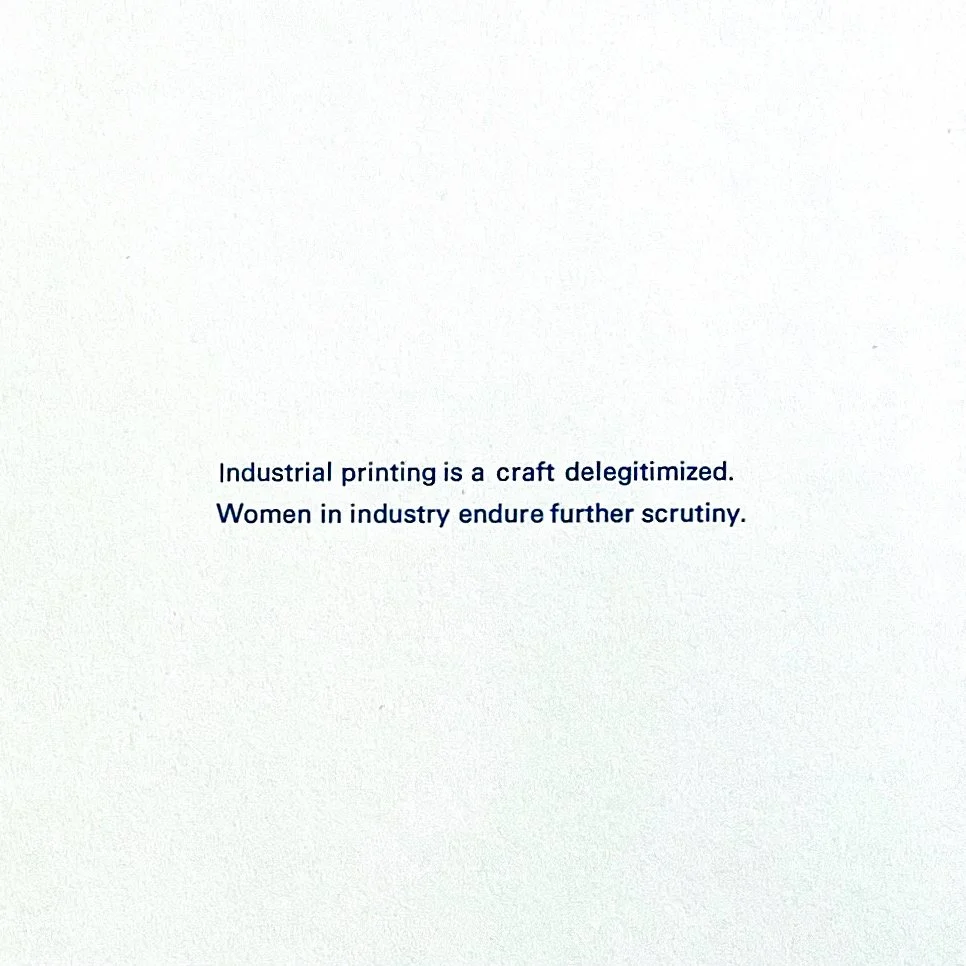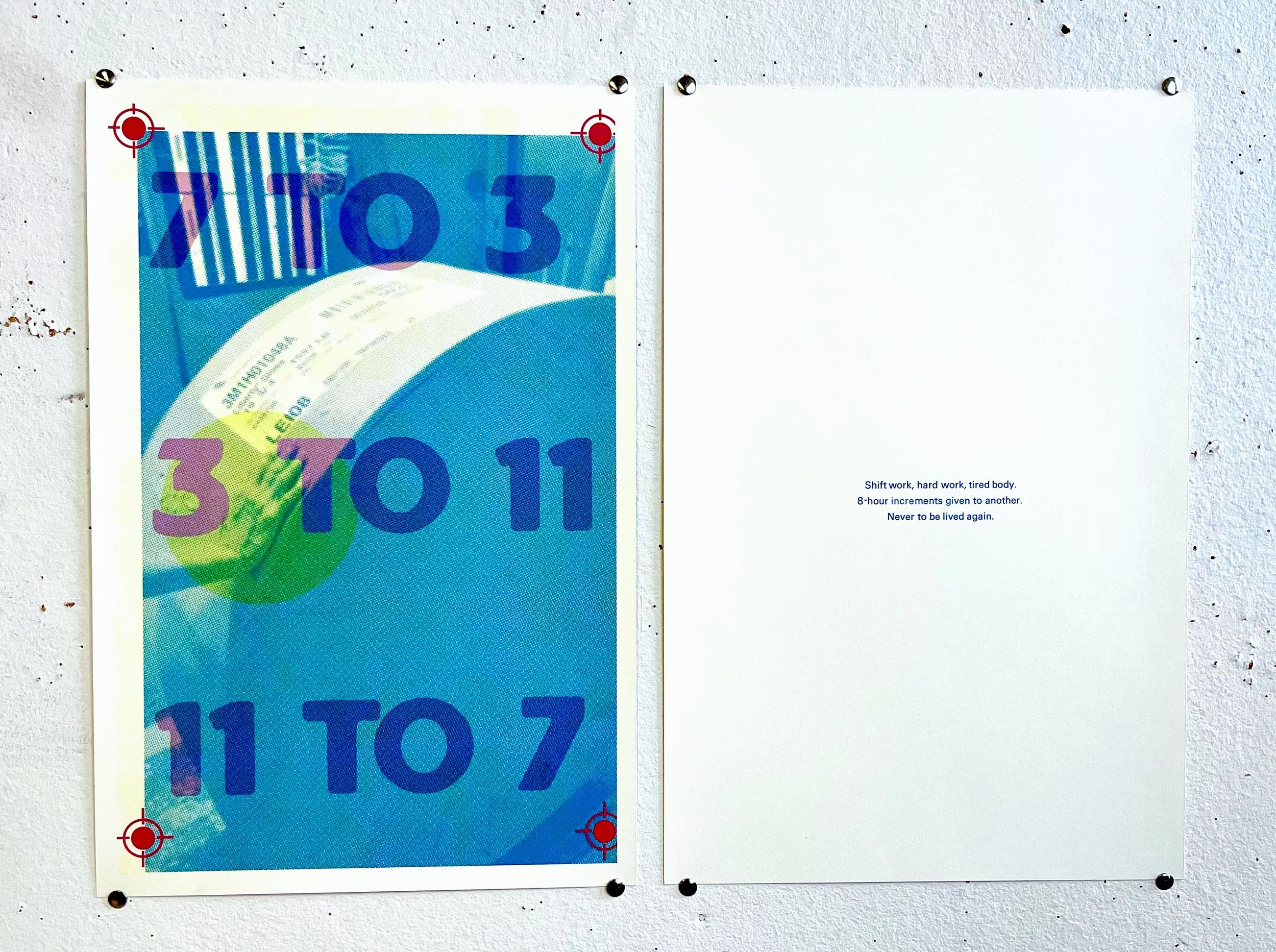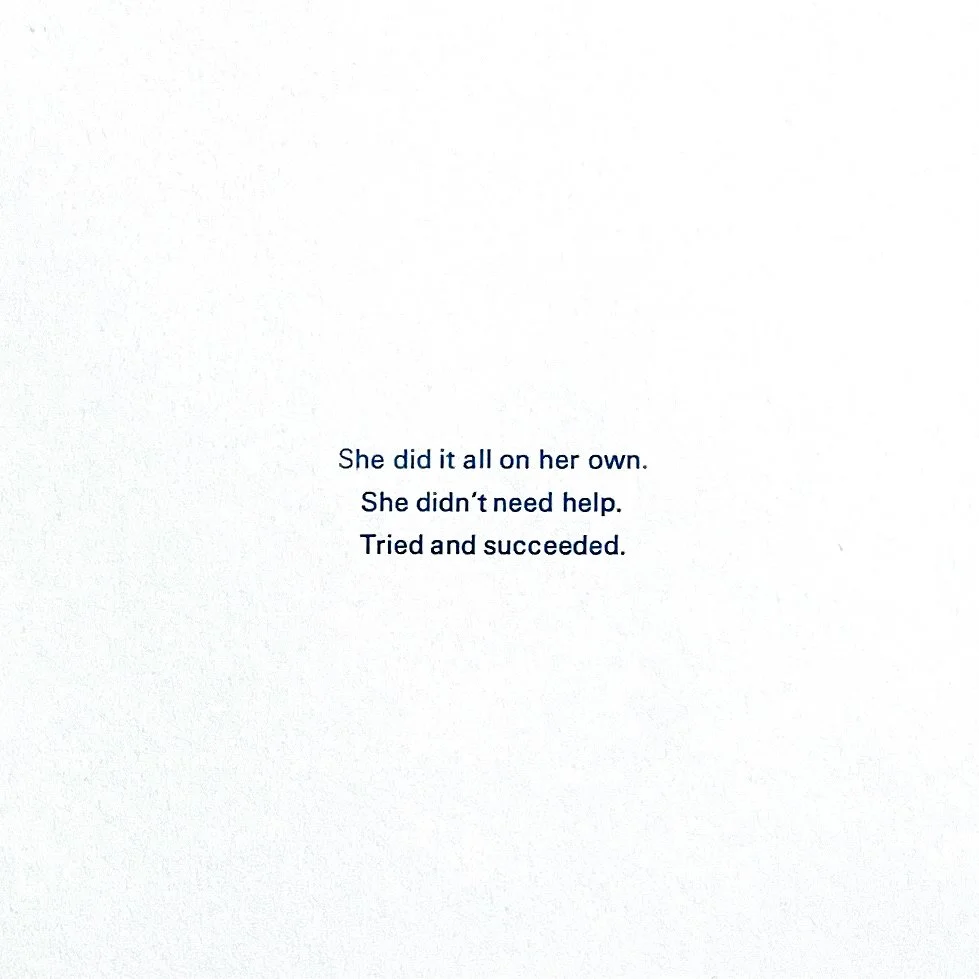Time’s A-Wastin’
Layout
Production Design
Advertisement and Marketing Design
PROJECT DETAILS
For my independent research project: a set of 5 diptychs exploring my family history in the printing industry and my place in the intersection of print as art and print as labor. An homage to my mother, to print, and to women’s work. Digital inkjet prints on French paper with accompanying passage using hand-set type and printed by me on the letterpress printers.
In the 1980’s and 90’s, much of my childhood was spent with my mother at the industrial pressroom where she worked. Over the years, many other family members, including my father, step-mother, aunts, and uncles worked there, too. A total of 13 members of my family have done this work. Into my late childhood and early adulthood, my blue-collar upbringing gave me feelings of shame and embarrassment. Factory work was and still is seen as one of the lowest forms of labor, and I was not proud to have a family with roots in the printing industry. Despite this, ink is in my blood. I did not realize the significance of my history with and love for the printing process until I first stepped foot into the IU Letterpress Studio in September of 2019. The smell of the ink hit me in the face with an intense wave of nostalgia. Hearing printing lingo in this space that I have heard my entire life gave me an unanticipated feeling of belonging.
In addition to the sense of belonging I feel in the letterpress studio at Indiana University, there is also another, more complicated feeling that arises. I am praised for my academic explorations within the world of design and print production. In contrast, my family’s relationship with the labor side of the print industry, which is ultimately a facet of graphic design, is seldom celebrated. Questions begin to surface for me. Why is one facet of the design and print industry legitimized while another is disregarded? Who is making that determination? Why them? My presence in the letterpress studio and my work on the presses is a personification of the conflict between industry and the traditionally-elitist institution of academic art and mark making. I aim to explore my relationship with this conflict and find pride in my place within it.
As my existence is a living, breathing embodiment of the intersection of print as art and print as labor, I use the same processes that my family has used for generations to create a series of five posters, exploring both the print medium and its possibilities as well as the dichotomy between art and industry. I use the visual language of printmaking to pay homage to my family’s labor.





